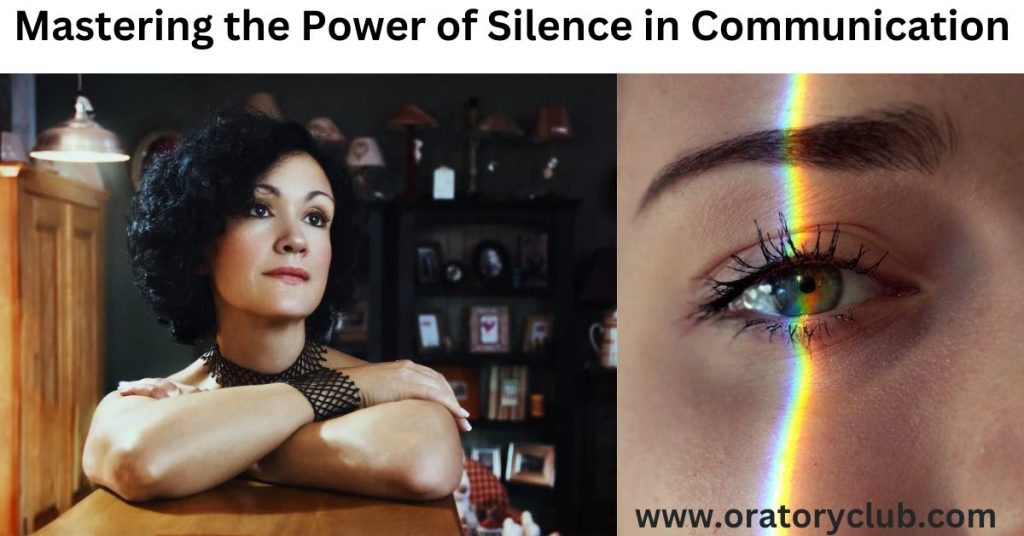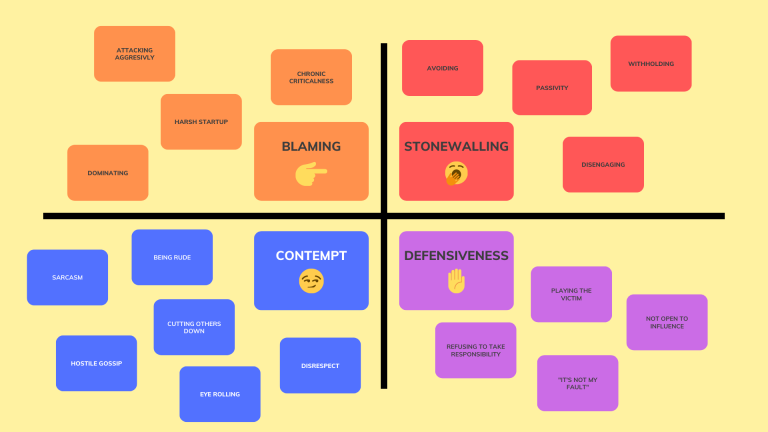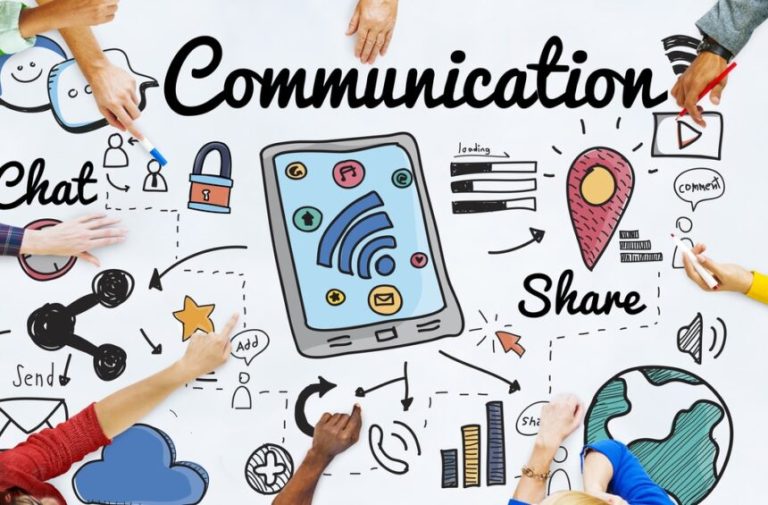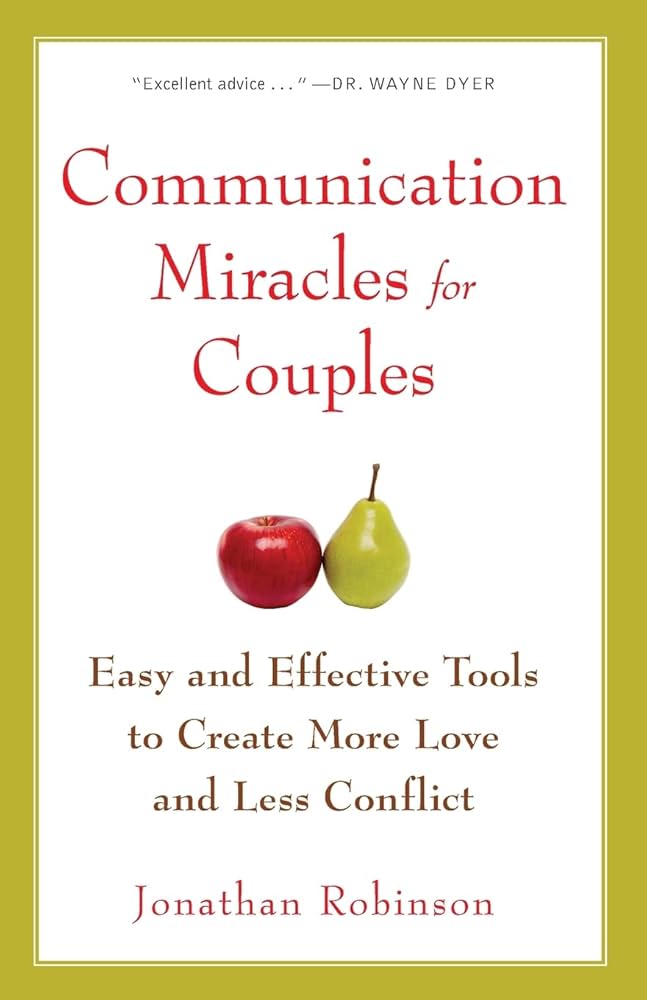Mastering the power of silence in communication
Communication is a fundamental aspect of human interaction. We express ourselves through words, gestures, and body language, but often, we underestimate the power of silence. Silence is a form of communication that speaks volumes, and understanding its role in effective communication is crucial. In this blog post, we will explore the significance of silence in communication and how it can be a powerful tool for conveying emotions, and thoughts and building stronger connections.
What is silence in communication?
Silence in communication is the intentional absence of spoken words, yet it holds immense significance. It serves as a powerful non-verbal tool for conveying emotions, thoughts, and meanings. Silence can emphasize a point, express agreement or disagreement, provide space for reflection, and foster deep understanding. It plays a pivotal role in active listening, allowing the speaker to share their thoughts without interruption, and it encourages a sense of respect and patience. Furthermore, silence can serve as a de-escalation strategy in conflicts, creating a pause for emotional regulation and more rational dialogue. In essence, silence is a dynamic and essential component of effective communication.

The Many Faces of Silence
Silence in communication can take various forms, each with its unique impact:
- Reflective Silence: This type of silence occurs when you take a moment to pause and reflect before responding. It shows that you are actively listening and considering what the other person is saying. Reflective silence fosters better understanding and more thoughtful responses.
- Awkward Silence: These moments can be uncomfortable, especially in social settings, but they are essential. Awkward silence gives people time to process information and formulate their thoughts, which can lead to more meaningful conversations.
- Comfortable Silence: Sometimes, being in the company of someone without the need for constant chatter is a sign of a strong and comfortable relationship. It signifies that you are at ease with the other person’s presence and can enjoy each other’s company without the compulsion to fill the air with words.
- Silence as a Form of Emotional Expression: Silence can be a powerful way to convey emotions. A long pause, a deep sigh, or a teary-eyed silence can often express feelings more profoundly than words ever could.
How to use silence in communication?
Using silence in communication effectively requires a thoughtful approach. Here are some strategies and scenarios in which silence can be employed to enhance your communication:
- A Most Useful Communication Tool: Nonverbal communication often speaks louder than words. Silence can convey a range of emotions, from attentiveness to contemplation, and can even act as a form of emphasis. It’s a versatile tool for enhancing the depth and impact of your communication.
- Allows You to Think, Breathe, Listen, and Hold Attention: Pausing before you respond allows you to gather your thoughts, choose your words carefully, and appear thoughtful rather than impulsive. This not only benefits your own communication but also engages your audience or conversation partner. It gives them a moment of anticipation and underscores the importance of what you’re about to say.
- Allows Others to Invest in Your Ideas: Silence after asking a question or receiving one allows others to process and formulate their responses. It demonstrates that you value their input and creates a space for thoughtful dialogue. It also projects confidence, showing that you’re not easily rushed or pressured.
- Always Seems Longer Than It Is: In a world of constant distractions, even a short pause can feel like an eternity. This highlights the potential impact of well-timed silence in communication. It can break through the noise and grab attention, making your message more memorable.
- Results in Others Expressing Themselves: By giving others time and space during moments of hesitation or discomfort, you create an environment where they feel encouraged to share their perspectives. Waiting patiently for their response demonstrates your respect and genuine interest in what they have to say.
- Active Listening: Practice active listening by remaining silent when others are speaking. Give them your full attention, maintain eye contact, and avoid interrupting. This allows the speaker to express themselves fully and feel valued.
- Reflective Silence: Use reflective silence as a tool to process information before responding. It can be particularly useful in conversations where thoughtful and well-considered responses are important. Pause to collect your thoughts and respond more thoughtfully.
- Empathetic Silence: When someone is sharing their emotions, concerns, or personal experiences, empathetic silence can convey your support and understanding. You don’t always need to provide solutions or words of comfort. Sometimes, a comforting presence through silence can be more meaningful.
- Pause for Emphasis: Employ brief pauses strategically to emphasize key points in your speech. Pausing before or after an important statement can create anticipation and draw attention to that part of your message.
- Awkward Silence: While awkward silence can be uncomfortable, it has its place in communication. It can provide a natural break in a conversation, allowing both parties to gather their thoughts or process information. Embrace it, but be ready to continue the conversation when appropriate.
- Conflict Resolution: In heated discussions or conflicts, silence can be a valuable tool. When tensions rise, take a step back and allow a moment of silence. It can prevent the situation from escalating and provide a space for both parties to think and reflect on their positions.
- Comfortable Silence: In personal relationships, feeling comfortable with silence is a sign of a strong connection. Enjoying each other’s company without the need for constant conversation can deepen your bond. You don’t always have to fill every moment with words.
- Clarification: Use silence as a means of encouraging the other person to elaborate or clarify their thoughts. After they have spoken, maintain silence, which can prompt them to provide more information or offer further insights.
- Strategic Pauses in Presentations: In public speaking or presentations, strategic pauses can be impactful. They allow your audience to absorb information and create a sense of anticipation. Use pauses to transition between ideas, highlight key points, or engage your listeners.
- Body Language: Non-verbal cues such as facial expressions and gestures can enhance the impact of silence. Maintain an open and receptive posture during conversations to signal that you are engaged and listening.
Incorporating silence into your communication is a skill that can enhance the quality of your interactions. To use silence effectively, remember to:
- Maintain a neutral or positive nonverbal presence to avoid appearing impatient or judgmental.
- Be mindful of the context and the individuals involved. Silence may be interpreted differently in various situations.
- Use silence strategically, allowing it to serve a purpose in the conversation rather than being an awkward or uncomfortable pause.
- Practice active listening, paying close attention to both verbal and nonverbal cues to understand the nuances of the conversation.
Incorporating silence into your communication repertoire takes practice and awareness. It’s essential to strike a balance between speaking and silence, as overusing or underutilizing silence can be counterproductive. Pay attention to the context and the needs of the situation, and adapt your communication style accordingly. By mastering the art of using silence, you can become a more effective and empathetic communicator.
Role of silence in communication
The Power of Listening
Effective communication is a two-way street, and silence plays a crucial role in the art of listening. When we genuinely listen to someone, we allow them the space to express themselves without interruption. Here’s how silence contributes to being a better listener:
- Active Listening: When you remain silent and give your full attention to the speaker, it shows that you are actively engaged in the conversation. This encourages the speaker to open up and express themselves more freely.
- Empathy: Silence allows you to connect with the speaker on a deeper level. It gives you the opportunity to empathize with their emotions and thoughts, as you are not rushing to respond or judge.
- Respect: Silence is a sign of respect. It shows that you value the speaker’s words and are willing to listen without immediately offering your own perspective.
- Comfort and Space: Silence can offer individuals the comfort and space they need to share their thoughts and feelings at their own pace. It allows for reflection and self-expression without feeling rushed.
Using Silence for Clarity
Sometimes, silence can be more impactful than words in resolving conflicts and clarifying misunderstandings. When tensions rise, taking a step back and allowing a moment of silence can:
- Prevent Escalation: In heated arguments, silence can act as a cooling-off period. It gives both parties the chance to collect their thoughts and approach the issue with a calmer mindset.
- Encourage Reflection: Silence can prompt individuals to reflect on their own actions and consider the other person’s perspective. This self-reflection can lead to more constructive and empathetic conversations.
- Non-Verbal Communication: Silence is a non-verbal form of communication that can convey a wide range of emotions, such as contemplation, agreement, disagreement, confusion, or discomfort. For example, a thoughtful silence may signal agreement or understanding, while an uncomfortable silence can indicate disagreement or tension.
Building Stronger Connections
Silence can also be a powerful tool in building and strengthening relationships:
- Intimacy: Sharing comfortable silence with a loved one can enhance the intimacy of a relationship. It demonstrates trust and comfort, as you don’t feel the need to fill every moment with words.
- Understanding: In professional settings, silence can be a valuable tool for understanding. Allowing others to speak without interruption can lead to more comprehensive discussions and better problem-solving.
Insights
- Cultural and Contextual Variations: The interpretation of silence can vary across cultures and contexts. In some cultures, silence may be seen as a sign of attentiveness and respect, while in others, it might be interpreted differently. Being aware of these cultural and contextual nuances is important in effective communication.
- Group Dynamics: In group communication, silence can be a signal of consensus or disagreement. When several people are silent after a proposal or idea is presented, it may indicate that further discussion or clarification is needed.
- Active Observation: Silence can also play a role in observation and nonverbal communication. When you observe someone in silence, you may pick up on subtle cues, body language, and emotions that they are not expressing verbally.
How to Master the power of silence in communication?
Mastering the power of silence in communication is a valuable skill that can enhance your effectiveness as a communicator. Here are some strategies to help you become proficient in using silence to your advantage:
- Practice Active Listening: To harness the power of silence effectively, start by honing your active listening skills. Focus on what the speaker is saying, avoid interrupting, and allow them to express themselves fully before responding. This practice encourages natural pauses in the conversation.
- Stay Present: Be fully present in the moment. Minimize distractions, such as your smartphone or other external factors, to give your full attention to the speaker. This helps you maintain silence when it is most appropriate.
- Avoid Over-Talking: One of the most common mistakes in communication is over-talking. People often feel compelled to fill every moment with words. By consciously avoiding over-talking and allowing moments of silence, you give both yourself and the speaker space to process and reflect.
- Strategic Pauses: Use strategic pauses for emphasis or to create a moment of reflection. Pauses can draw attention to key points or give your audience a chance to absorb important information.
- Respect Others’ Pace: Be patient and accommodating of different communication styles and paces. Some people may need more time to formulate their thoughts, so avoid rushing them. Allow for natural pauses as they gather their ideas.
- Non-Verbal Cues: Pay attention to non-verbal cues during silence. Sometimes, facial expressions, body language, or eye contact can convey more than words. These cues can help you understand the speaker’s feelings or intentions.
- Empathetic Silence: In emotional or sensitive conversations, silence can be a powerful tool. Show empathy by allowing moments of silence, as this can provide emotional relief and create a safe space for the speaker to share their feelings.
- Ask Open-Ended Questions: Encourage others to express themselves more fully by asking open-ended questions. These questions invite a deeper response and often result in more significant pauses for thought.
- Practice Silence in Conflict Resolution: In conflicts, silence can be a de-escalation technique. Instead of escalating a heated argument, allow for a pause in the conversation to diffuse tension and create an opportunity for more rational discussion.
- Cultural Awareness: Be mindful of cultural differences in the interpretation of silence. In some cultures, silence may indicate agreement or respect, while in others, it might signify discomfort or disagreement. Understanding these nuances is essential for effective cross-cultural communication.
- Self-Reflection: Practice self-reflection to identify your own tendencies in communication. Are you prone to interrupting or dominating conversations? Becoming aware of these habits is the first step in improving your use of silence.
- Feedback: Encourage feedback from others to gauge your communication effectiveness. Ask friends, colleagues, or mentors for honest input on your communication style and use of silence.
- Learn from Skilled Communicators: Observe skilled communicators, such as public speakers, therapists, or successful negotiators. Take note of how they use silence to their advantage and adapt these techniques to your own communication style.
- Practice Mindfulness: Incorporate mindfulness techniques into your daily routine to enhance your awareness of the present moment. This can help you stay in the moment and use silence effectively.
Conclusion
In the cacophony of daily life, silence often gets overshadowed by the noise of words. However, it is essential to recognize the power of silence in communication. Whether it’s listening actively, resolving conflicts, or building stronger connections, silence plays a vital role in our interactions with others. By understanding when and how to use silence effectively, we can become better communicators and foster more meaningful relationships. So, the next time you find yourself in a conversation, remember that sometimes, saying nothing can say a lot.





